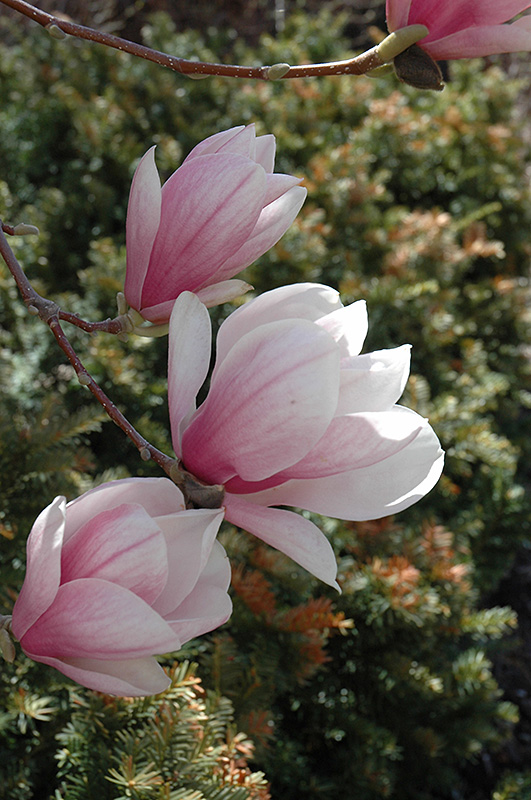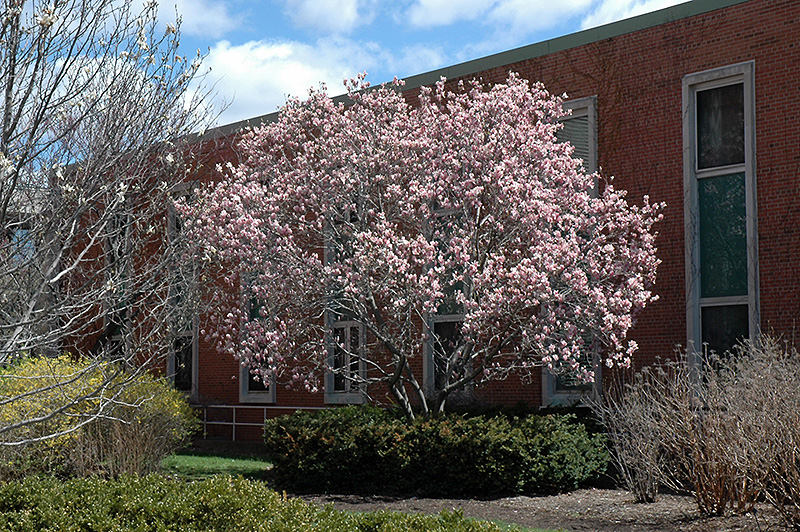Search Our Plants
Height: 30 feet
Spread: 30 feet
Sunlight:
![]()
![]()
Hardiness Zone: 5
Description:
This is considered by most to be the penultimate magnolia, featuring spectacular cup-shaped fragrant pink flowers in early spring, large spreading habit of growth; superb accent plant for the average home landscape, very sensitive to late spring frosts
Ornamental Features
Saucer Magnolia is covered in stunning fragrant pink cup-shaped flowers with white overtones held atop the branches in early spring before the leaves. It has dark green deciduous foliage. The large pointy leaves turn coppery-bronze in fall.
Landscape Attributes
Saucer Magnolia is a multi-stemmed deciduous tree with a distinctive and refined pyramidal form. Its relatively coarse texture can be used to stand it apart from other landscape plants with finer foliage.
This is a relatively low maintenance tree, and should only be pruned after flowering to avoid removing any of the current season's flowers. It has no significant negative characteristics.
Saucer Magnolia is recommended for the following landscape applications;
- Accent
Planting & Growing
Saucer Magnolia will grow to be about 30 feet tall at maturity, with a spread of 30 feet. It has a low canopy with a typical clearance of 5 feet from the ground, and should not be planted underneath power lines. It grows at a medium rate, and under ideal conditions can be expected to live for 80 years or more.
This tree does best in full sun to partial shade. It requires an evenly moist well-drained soil for optimal growth, but will die in standing water. It is not particular as to soil type, but has a definite preference for acidic soils. It is somewhat tolerant of urban pollution. Consider applying a thick mulch around the root zone in winter to protect it in exposed locations or colder microclimates. This particular variety is an interspecific hybrid.
This Plant Finder tool is an online catalog representing many of the varieties that we carry over the course of the season, and is intended for informational purposes only. Inventory varies seasonally, so we cannot guarantee that every plant will be in stock at all times - please contact your nearest Platt Hill Nursery store for current availability. It does not include our entire inventory of plants, so be sure to visit us to see varieties that may not be represented on this list.


